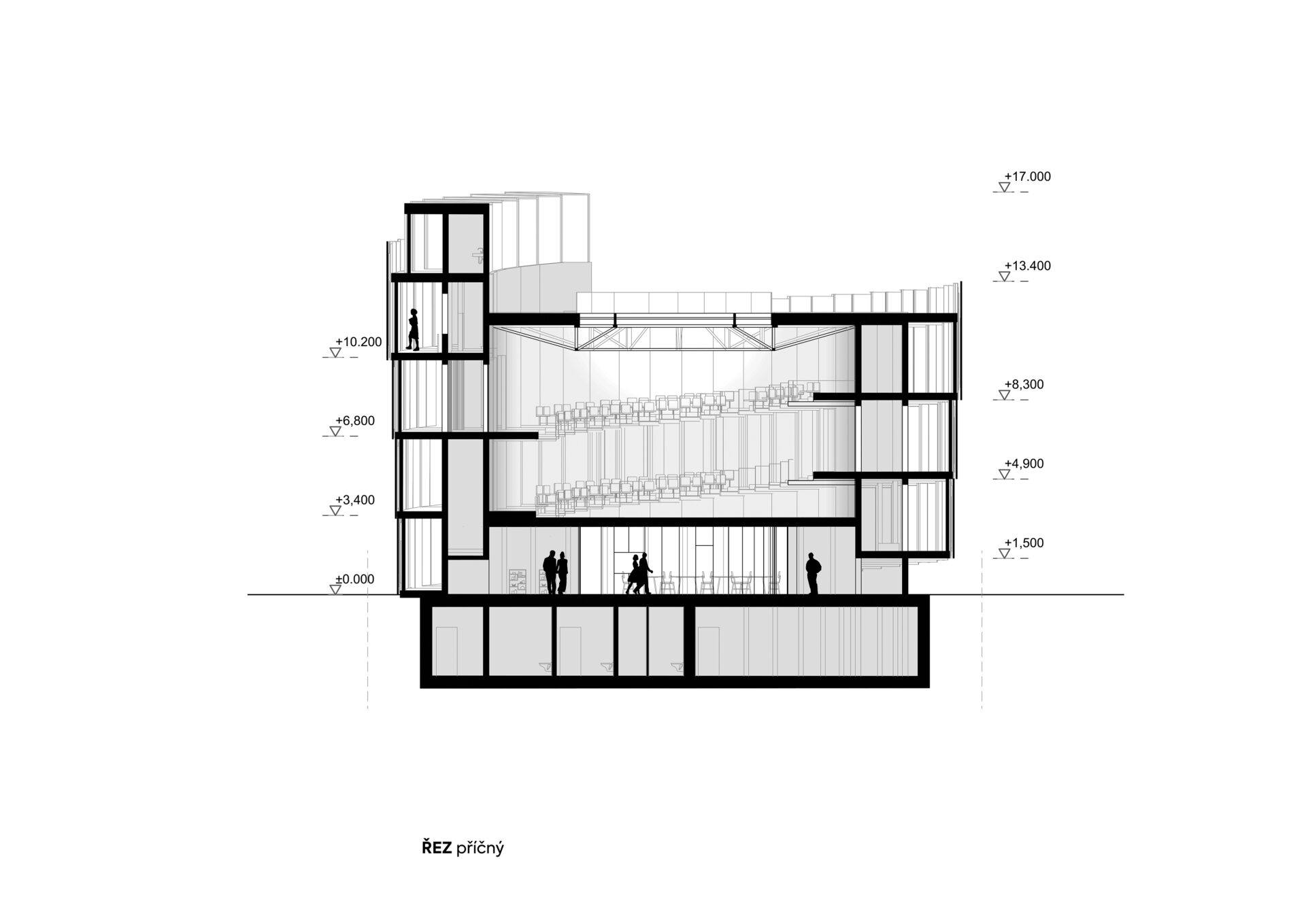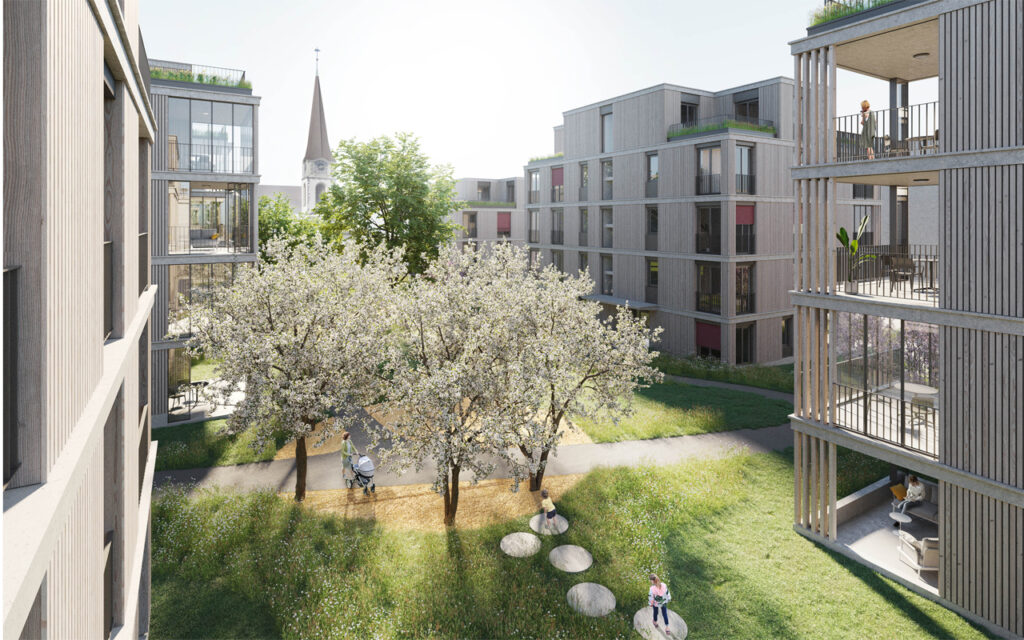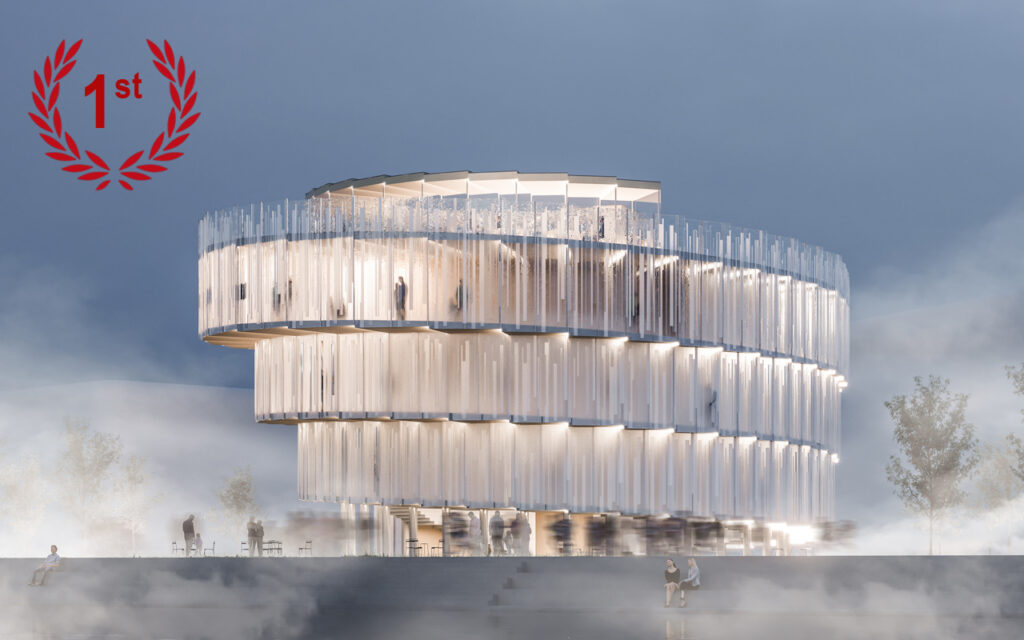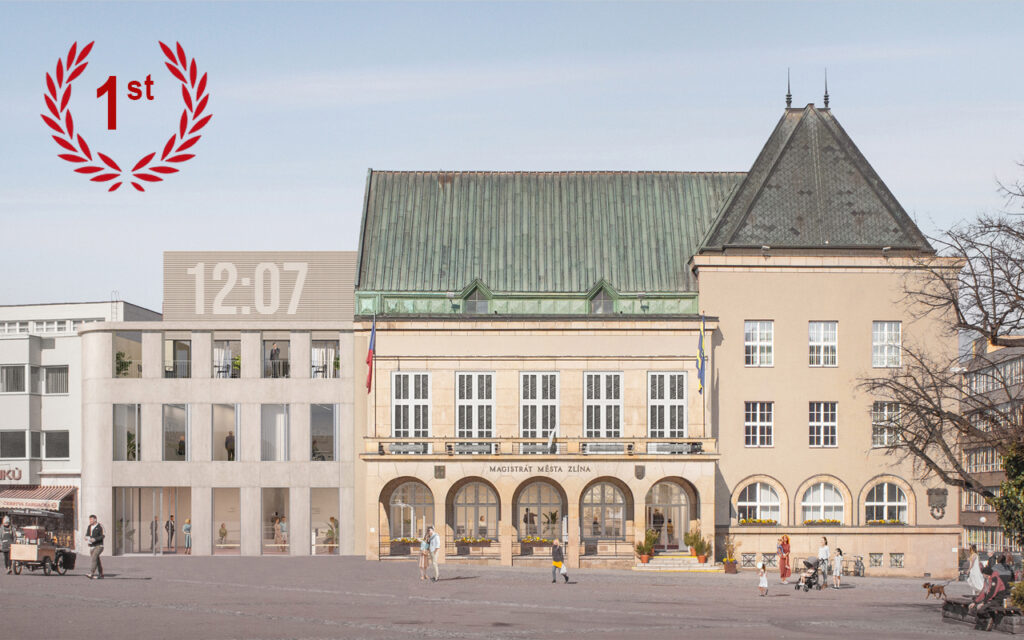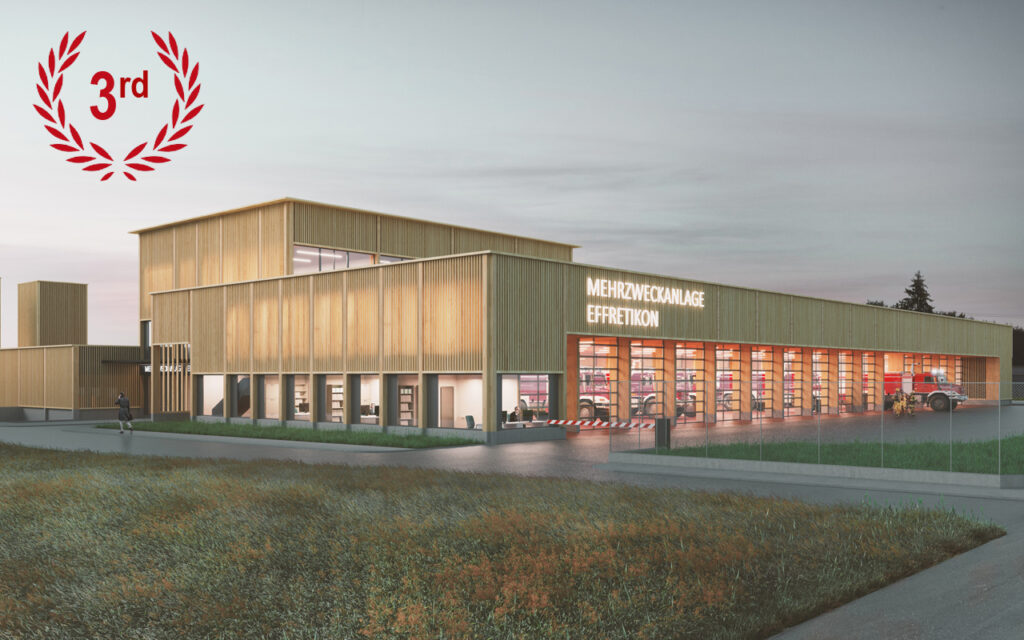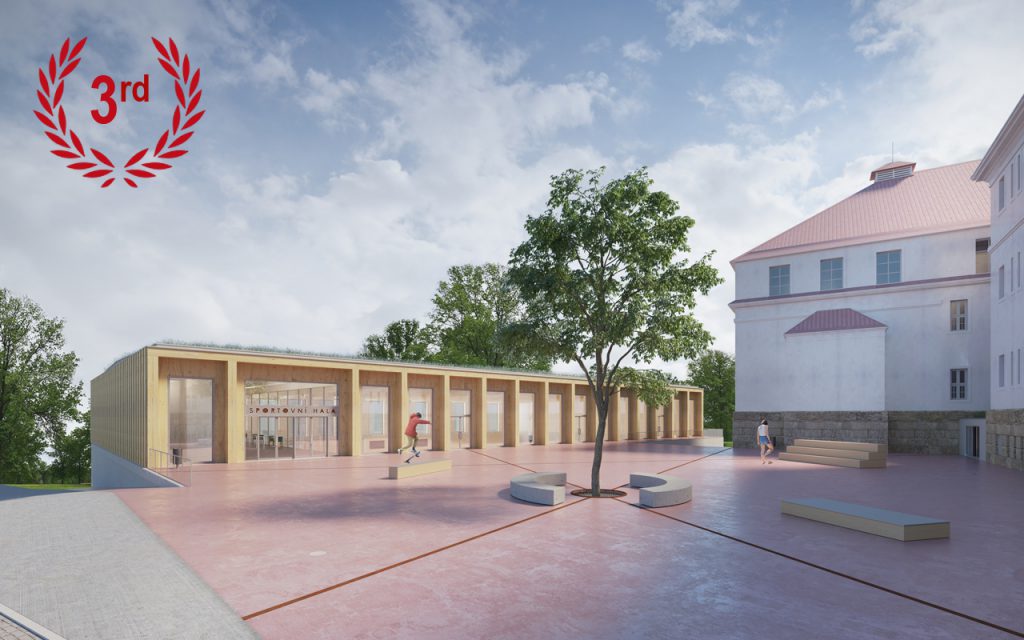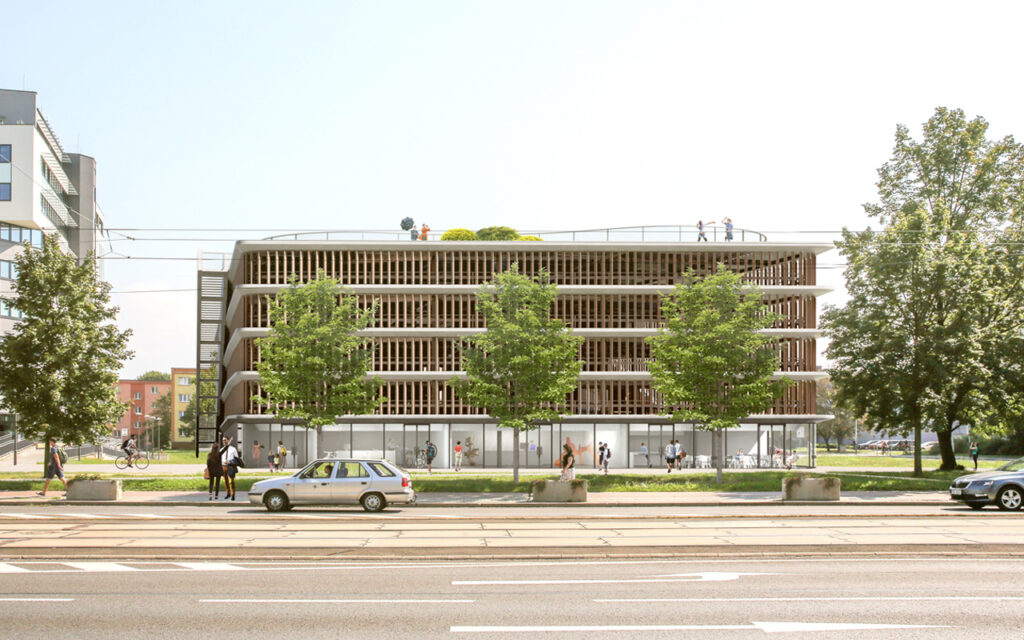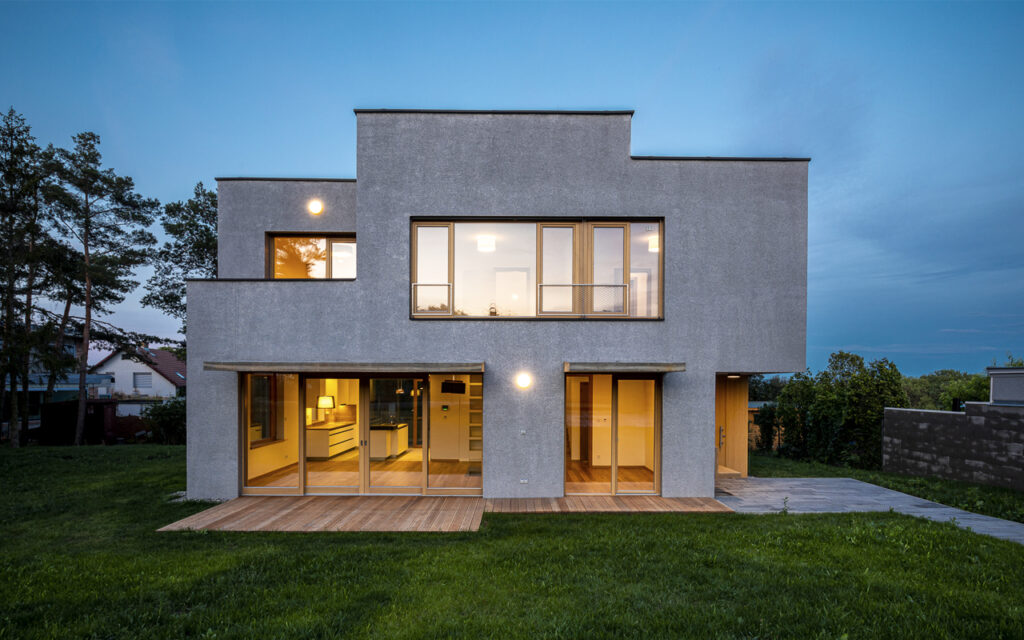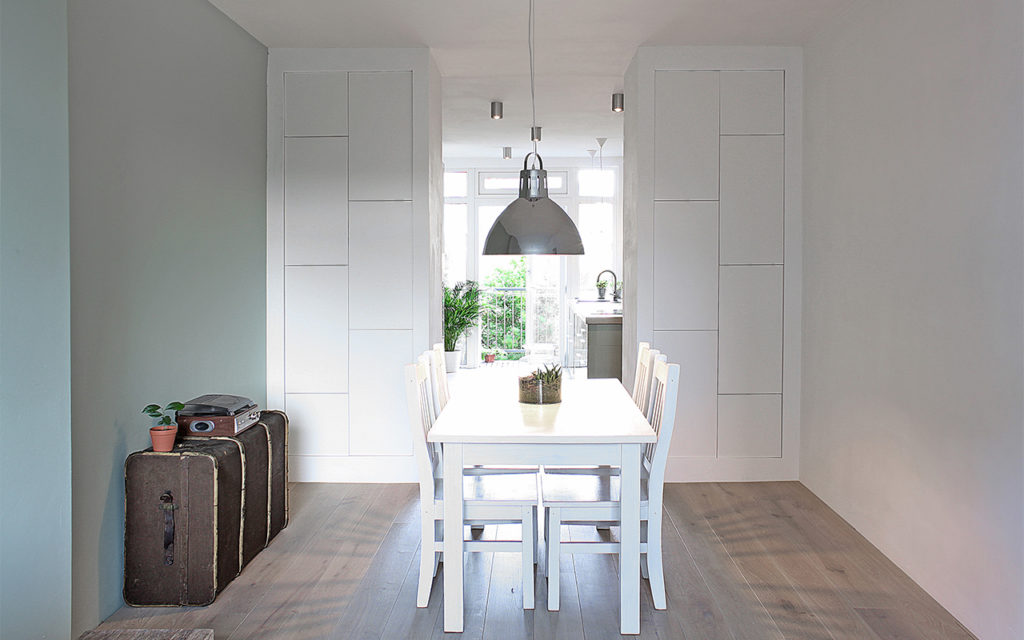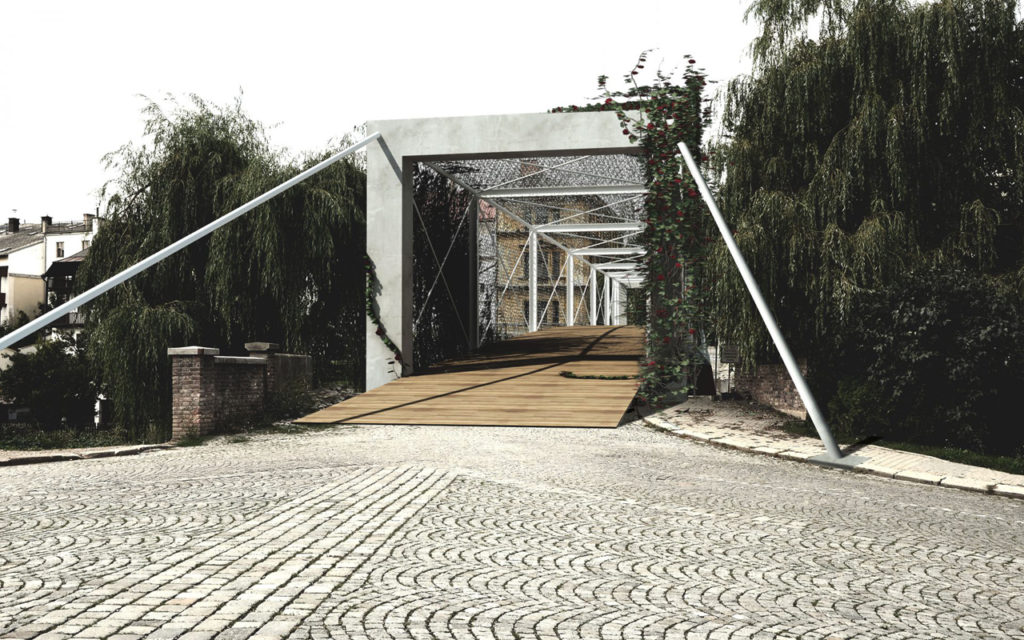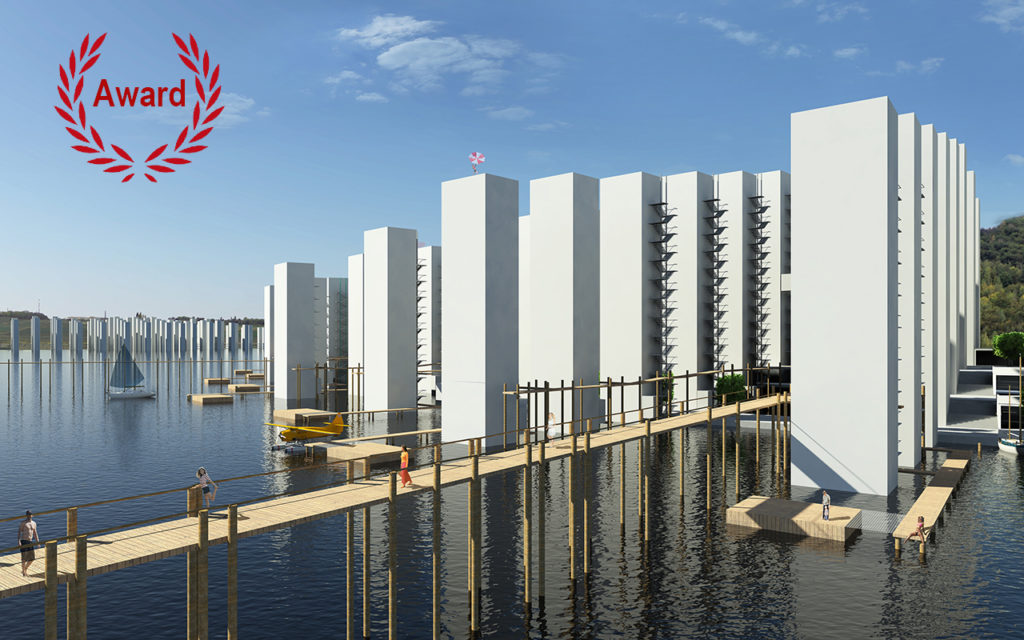World Expo 2025 in Osaka
‘SCULPTING VITALITY’
1st prize in the open architectural competition
Osaka, Japan, 2023
Authors: Michal Gabaš, Tomáš Beránek, Nikoleta Slováková + Tereza Šváchová
Collaboration: Rudolf Nikerle, Kryštof Jireš
Visual communication and exhibition concept: Lunchmeat Studio / Petr Fašianok, Jan Kistanov, Jiří Kubalík , Illustration by Dominik Miklušák
Visualization: ZAN studio / Pavel Vinter
Winning design of the architectural competition for the Czech pavilion for the World Expo 2025 in Osaka.
The concept of the Czech pavilion for the EXPO 2025 World Exhibition in Osaka is ‘sculpting vitality’. Our cultural wealth, ingenuity and nature are the foundations of the strength and vitality of the Czech nation. The Czechs as a nation of creatives and do-it-yourselfers, who for generations have offered their art and skills to the world. The architecture of the Czech pavilion for the World Expo 2025 in Osaka, Japan, is a sophisticated tool for achieving a higher form of vitality. The active movement of the visitor in the interior of the pavilion leads to the realisation of the cultural content and thus to the completion of the visitor’s journey – the achievement of inner vitality.
The linearly dynamic upward spiral movement seems to be an allegory of an ideal and fulfilled life path. However, a basal and deeply encoded instinct commands man to survive above all, which results in a series of uncoordinated movements in often unclear directions. These become the necessary source of experience to achieve the desired capacity for adaptation. At the same time, the human being, a social being, develops the urge to enjoy his life’s journey. In addition to the undeniably important physical vitality, a layer of vitality of the intangible, the cultural and the visceral is added at that moment.
The Czech pavilion’s ruffled form makes movement a basic tool for maintaining physical vitality. It explicitly encourages the visitor to engage in some form of physical exercise, while the content compels creative work with spiritual and cultural values. The concept of the proposed architecture is a thesis whose content is a space shaped by the movement of body and soul. The pavilion is a mass that requires the active involvement of the visitor, whose movement makes the exposition present. The very movement of the visitor inside the pavilion materializes the cultural content of the exhibition, thus completing the visitor’s journey. Achieving inner vitality.
The Czech Pavilion draws attention to itself with its dominant, precisely crafted, glazed facade. It is a reminder of the rich tradition of glassmaking and craftsmanship that has been established in the Czech Republic for many centuries. The silhouette of the pavilion’s form is significant. The frozen gesture of the trajectory of the spiral movement explicitly responds to the internal arrangement sculpting the external form of the house.
architecture
The concentric spiral wrapping around the auditorium in a logical continuity has the function of an exhibition and communication ramp serving for a smooth and linear upward movement of visitors. The capacity of its exhibition space is 402 m2 and its width varies between 1.8 and 7 metres. At a height of twelve metres, the ramp opens into a spacious viewing terrace with a restaurant and bar. An added spatial experience is not only the view of the calm sea surface, but also the view through the glass skylight down towards the auditorium. Here, the spatial concept of the house is completely legible.
The escape and also the way downwards is served by a staircase woven into the cavity of the double walls of the cylinder, which opens into the ground floor of the house with commercial amenities in connection with the pavilion’s forecourt and the area’s promenade. All technical facilities are concentrated in one underground floor, which occupies almost the entire area of the plot.
The mass of the house tilts upwards above its plan footprint and gradually grows. As a result, the pavilion shades part of the exterior area. The outdoor space is mainly used for lounging and contemplation, so it is conceived as a relaxation meadow providing outdoor restaurant capacity.
design and material solution
The predominant materials throughout the pavilion are timber in the form of prefabricated CLT panels and glass in the form of insulating panels with a crafted outer skin. Given the spatial and temporal complexity of the pavilion’s construction, the design envisages the production and preparation of the vast majority of components in the Czech Republic and relatively simple assembly on site after transport to Japan. In line with the set construction philosophy, the proposed construction emphasizes modularity, prefabrication and sophistication of implementation. The design concept is based on the principle of efficiently assembled repetitive segments.
The basic load-bearing system of the house consists of a combination of CLT wooden panels and steel reinforcing elements, which are mainly subjected to tensile stress. The circular floor plan is divided into thirty-six equal sections by a rational geometry, which are structurally and visually inscribed into the whole building.
realisation and subsequent dismantling, transport
The maximum possible level of prefabrication and preparation of the building in the Czech Republic is assumed throughout the design. Subsequent transport to Japan is assumed to be by shipping containers. The design takes into account the simplest possible assembly on site, including subsequent dismantling and restoration of the land to its original condition. After the return to the Czech Republic, the pavilion is expected to be used in a minimally modified form. Due to the nature of the pavilion’s character, future use is proposed in terms of museum or gallery-type exhibition space at its place of origin. This will complete its journey in the spirit of the originally proposed exhibition concept of the search for internal viability.
facade
The facade consists of insulating glass panels of double or triple glazing. The outer surface of each panel is artistically processed. The design provides for the processing of an estimated eight millimetre panels using the so-called sintering method, also known as fusing. On the crystal pane of flat float glass with a low iron content, strips of other glass will be scribed in a pre-designed but seemingly random grid in different layers over each other to form a motif inspired by the linearly raised basalt pipes known mainly from the Kamenický Šenov area. It is assumed that for the scribed strips, it will be possible to make use of the undercut material created by formatting the underlying panes. The glass facade is to become a significant element with an architectural reference to traditionally successful Czech pavilions of the past.
exposition
The Czech pavilion for EXPO 2025 in Osaka represents the path of the foundation of the Czechs and Slovaks state through the most important of its history to the present Czech society, which, despite its problems, has been moving in a clearly defined pro-European direction for almost 20 years. It connects the different stages of development with artists, companies and technologies. Here we tell the story of a creative nation and its global story
A stone-paved path leads the visitor from the campus promenade to the pavilion ramp in the house’s parterre. At this point, the visitor is asked to choose one of three route options. The first two routes ascend a ramp to the first point of contact, from where everyone sets off on their own either up a smoothly dynamic ramp upwards through the interactive exhibition (route I), or through the foyer towards the centre of the pavilion, to the auditorium (route II). Another option that visitors can opt for in the parterre is to take the elevator directly to the roof of the pavilion, to the restaurant (Route III).
After four turns of the spiral, the visitor will find himself at the top. Home, perhaps not of their own strength. In the middle of the third thematic chapter of the exposition, twelve metres above the area’s promenade, he has the option of refreshment in the sky bar or the fine dining restaurant.
explication:
vitality: is universal; it is a state of strength and activity; energy. A force that sustains life and is present in all living things.
man: an agent capable of nourishing and shaping the universal vitality by his creativity and natural talent. Man as the central agent of the quality of the future society and the future world.
the present – the age of the Anthropocene. A period when human activity, both planned and unplanned, affects the global ecosystem.
Under the influence of accepted responsibility and technological progress, life in the new society takes on more complex dimensions.
The human vitality of the present and future – a set of competences and values that enable the use of technological progress without abandoning humanistic values.
application of the concept of exhibition spaces:
the history of our country: Czechia as a vital nation. Our cultural wealth, ingenuity and nature as building blocks of the strong vitality of our nation.
the present and future of our country: The Czech Republic as a source of stimulating ideas, education and innovation contributing to a new vitality of an international and intergenerational society.






